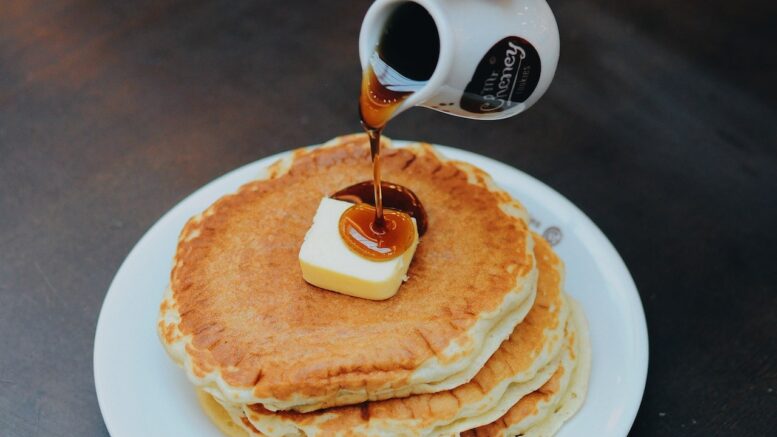There’s nothing quite like the rich, sweet taste of pure maple syrup. Whether it’s drizzled over pancakes or used as a glaze for ham or salmon, maple syrup adds an irresistible depth of flavor to any dish.
But with so many different grades and varieties available, it can be confusing to know how to choose and use maple syrup. That’s why we’ve put together this guide of expert tips on everything you need to know about how to make maple syrup.
Choosing the Grade
Maple syrup is graded based on its color and flavor profile. The most common grading system used in North America is the US Department of Agriculture (USDA) system, which includes four grades:
- Grade A: Light Amber – This grade has a delicate taste that pairs well with lighter dishes like fruit salads or yogurt.
- Grade A: Medium Amber – With a slightly stronger taste than light amber, medium amber syrup works well in savory dishes like glazes for roast chicken or baked beans.
- Grade A: Dark Amber – This deeply flavored grade is ideal for baking or cooking in richer sauces where you want a bold flavor.
- Grade B – Often considered the best quality but too strong for some tastes, the overpowering sweetness of this grade makes it ideal for marinades and dressings.
Ultimately, selecting your preferred grade depends on your personal preferences and what you intend to use the syrup for.
Understanding Flavor Profiles
Another factor that affects the taste of maple syrup is its terroir – just as wine expresses unique regional flavors based on where grapes are grown, and bourbon whiskey due to resting barrels atop local limestone formations. Artisanal companies create syrups inspiring various geographical growing areas (even producing blends embodying each one).
Canada and New England are known worldwide as top producers. Vermont-based labels especially maintain popularity because all real Vermont Maple Syrup remains 100% Pure (with no artificial sweeteners) and is regularly inspected by a committee, ensuring quality.
In Canada, Quebec prides itself as the world’s top producer, but Ontario is on track to beat out Quebec’s production levels within the next decade. However, all producers must conform to strict guidelines for grading/distribution under their national identity program.
Cooking With Maple Syrup
Maple syrup can replace regular sugar in many recipes, although you may need to adjust the amount of liquid in the recipe. One cup of maple syrup is roughly equivalent to ¾ cup of granulated sugar. But whenever adding it at high temperature, pay extra attention during its boiling process, as this natural product caramelizes rather easily (like honey).
Trying something new every once in a while would change things up – how about using Maillard instead? A Maillard reaction occurs when high heat makes sugars/certain amino acids react together, resulting in rich color/complex flavor. Drizzling pure maple syrup atop grilled vegetables or seared proteins allows for that sweet taste profile without subjecting it to baking temperatures. Always experiment, and remember that no harm comes from making mistakes. It takes practice before mastering proper measurements, but starting small wouldn’t be so bad either.
Storing Maple Syrup
Avoiding exposure to air by following proper storage methods is key since it can otherwise promote the growth of natural bacteria and spoil its taste. This not only ruins flavors but can also pose a serious danger if ingested over extended periods. Keep it in places that are dark and cool, away from direct sunlight. If purchased online, refrigerate immediately until use. This is because maple syrups shipped directly from producers often don’t undergo pasteurization. A warm kitchen, exposed areas, and humidity can cause mold once contamination occurs, so keep checking on the bottles you use frequently.
Appreciating Style & Sustainability
While choosing between grades might depend on an individual’s preference, some select bottle labeling based on packaging. Producers whole-heartedly embody sustainable choices – much like the bourbon whiskey industry (Jim Beam and Maker’s Mark have become symbols of corporation-wide sustainability/sourcing initiatives).
Many companies within Canada, for example, Crow Hill Craft Syrup Company from Ontario, also use special tree-tapping techniques to conserve trees long-term, reducing the number of trees harvested per production cycle. Be vigilant when purchasing so you can support those who work tirelessly to ensure your satisfaction as well as contribute back to nature. Responsible labels always step forward, taking actions that guarantee environmentally friendly practices through recycling options available.
In Conclusion
Maple syrup is a delicious, versatile ingredient that adds an incredible flavor to savory or sweet dishes alike. Remember these tips when selecting grades and understanding terroir flavors – expanding beyond routine recipes and experimenting with new methods. Be sure to store maple syrup properly in cool and dry places away from direct sunlight or humidity. Furthermore, supporting vendors practicing environmentally friendly procedures is a significant step towards sustainability with each purchase!
